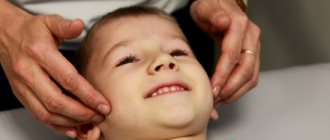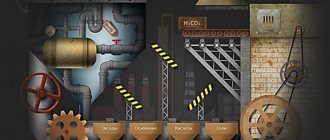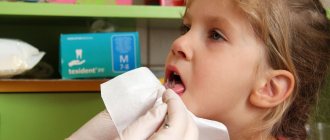Benefits of facial massage:
- blood circulation improves;
- due to the increased supply of oxygen to cells, cell regeneration improves;
- with regular actions, small wrinkles are smoothed out;
- collagen synthesis is launched, which is responsible for the youth of the face;
- improves complexion;
- the skin begins to glow from the inside and takes on a velvety appearance.
Before you start performing a massage, you must first wash your hands and cleanse your face. You should not massage with dirty hands - you can introduce an infection into the pores, which will expand under the influence of blood flow.
How to correct a swollen oval face
What can you do at home?
First, prevention is the best cure. The better the quality of your skin, the longer your facial contour will be clear and even. And you can improve the quality and density of your skin yourself with daily and proper care. Retinol is recommended as an anti-aging component - it affects both the dermis, triggering collagen formation processes, and the epidermis, stimulating cellular renewal processes. Currently, retinol is a very popular anti-aging component and for good reason - its effect is noticeable and pronounced, but it is important to remember about the peculiarities of its use, because it irritates the skin and if used incorrectly, complications can occur (it will be especially difficult to deal with vascular problems). Retinol is always applied at night; its use should always be accompanied by the use of SPF during the day.
Another important ingredient in skin tightening is vitamin C. Not only does it have vascular strengthening and brightening effects, but collagen formation processes also cannot take place without it! Even when taking collagen internally, you must make sure that you consume enough vitamin C, because otherwise all your efforts are in vain! By tightening the skin, vitamin C has a lifting effect and significantly improves the quality of the skin.
What can be done in a cosmetologist's office
Massages and microcurrents
They give a good effect and are also able to relieve the lymphatic system, preventing the formation of edema. It is important to follow the course and regularly.
Peelings
Stimulates cellular renewal processes. Cosmetologists often encounter patients’ fear that peelings thin the skin, but when done correctly, they, on the contrary, thicken and renew the tissue.
Mesotherapy and biorevitalization
An excellent way to influence the dermis - they stimulate collagen formation processes, saturate the skin with amino acids - the building material of proteins, and replenish the deficiency of hyaluronic acid. It is also important to follow the course of these procedures.
Fillers
A popular procedure, during which it is especially important to pay attention to the qualifications and working methods of the specialist. When tissues sag downwards, as a rule, the corrective method of choice will be not to work in the lower third of the face (not filling the nasolabial folds), but, first of all, to fill the deficit in the areas in which it has formed, that is, in the temporal and zygomatic areas. In any case, everything is individual and when installing fillers, it is extremely important to take into account the patient’s personal data, so look at the work of the cosmetologist you are contacting, read reviews, and ask what actions will be taken in case of failure. And, of course, for this procedure you can only consult a doctor!
Hardware techniques
Currently, the most popular type of oval restoration devices are ultrasonic face lift devices (non-surgical SMAS lifting). The principle is based on the fact that ultrasonic waves penetrate to a depth of 5 mm, causing targeted thermal contraction and tissue tightening, which leads to tightening of not only the skin, but also subcutaneous fat. As mentioned above, we are all individual and only a doctor can determine whether this technique is right for you after an individual consultation.
SMAS-lift
A surgical facelift can give an amazing result; in case of pronounced tissue prolapse, surgical intervention can help eliminate the problem, however, it is important to remember that here, too, a lot depends on the qualifications of the surgeon, so choose a specialist carefully. And let me remind you that the operation will not affect the quality of the skin in any way, so you should not wait for pronounced age-related changes to undergo surgery in the hope that it will solve all the problems at once.
You need to massage your facial skin along the lines of lymph movement:
- from the point between the eyebrows up to the hairline;
- from the same point to the temples along the brow ridges;
- also from this point along the back of the nose to the tip and down the wings;
- from the inner corner of the eye to the outer, then from the outer to the inner;
- from the sinuses to the temples;
- from a point above the upper lip to the middle of each ear;
- from the point under the lower lip to the earlobes;
- from the earlobes down the neck to the collarbones;
- in front from the collarbones along the larynx up to the chin.
It is necessary to make movements in these directions to tighten the skin and prevent the formation of wrinkles.
What is self-massage?
Self-massage is a combination of stroking, rubbing, kneading and vibrations that a person performs on the surface of his body. Self-massage in speech therapy practice is divided into 3 types: general (self-massage of the head, neck, torso), articulatory (self-massage of the lips, cheeks and tongue) and finger massage.
Any self-massage cannot do any harm, and its benefits are obvious. It trains blood vessels and promotes better oxygen supply to internal organs. By doing self-massage, a child strengthens the muscles of the hands and fingers, relieves muscle tension, and kneads one or another part of the body or face.
Another advantage of self-massage is its accessibility: you don’t have to go anywhere and change your routine, and you can do it at any convenient time.
Regular self-massage and adult supervision over its correct implementation are important.
Self-massage techniques
When performing self-massage, a number of techniques are used: stroking, rubbing, pressing, pinching, passive movements, flexion, extension of the fingers.
The simplest and most important technique of self-massage is stroking. Calming effect on the nervous system. Improves muscle and gland function. In restorative self-massage, this technique is performed for increased nervous excitability, and in therapeutic self-massage, for spasms, injuries, etc. Stroking can be linear or circular.
Kneading is a self-massage technique that massages muscles. Under the influence of kneading, the speed of blood flow significantly improves, which contributes to the rapid restoration of mental and physical performance.
A special massage technique is rubbing. It differs from other techniques in its more energetic execution in various directions. Rubbing can be: - straight, zigzag, spiral and circular rubbing with the pads of one or more fingers and the tubercles of the thumbs; - straight rubbing with forceps; - straight rubbing with the base of the palm; - comb-like rubbing with fingers clenched into a fist. During rubbing, local blood circulation improves, tissues warm up, the resorption of hardening accelerates, muscle plasticity increases and performance increases.
Passive movements are performed only after kneading the muscles and rubbing the joints. Usually passive movements are performed with outside help.
Children are first introduced to self-massage techniques in speech therapy classes. You can teach children self-massage techniques from 2-2.5 years old. The training takes place in a playful way; children are asked to imitate various animals or objects (for example, a monkey). If desired, any parent can teach their baby to perform self-massage.
Rules for performing self-massage
Before performing articulatory self-massage, it is necessary to check the cleanliness of the baby’s hands and face. It is advisable that the child have a clean handkerchief (preferably a disposable one), because sometimes excessive salivation accompanies the performance of certain exercises. Contraindications to self-massage are open wounds on the massaged area. It is better if the baby does articulatory self-massage in front of a mirror. The only thing you need to remember is that the child needs to perform self-massage for 7-10 minutes, without causing any discomfort. Each movement must be repeated 4-6 times. It is good if, when performing exercises, the child hears speech accompaniment in poetic form or calm music.
IV. How to massage?
Next, we’ll talk about how to massage a child’s face, use spoons, and perform articulation and finger massage to develop speech.
Logomassage of the face
Follow these instructions, unless otherwise directed by your doctor: when performing a massage, move from top to bottom, try not to strain. Don't forget that your hands are real medicine!
Logomassage with spoons
Spoons allow you to have a good effect on speech areas. Be sure to make sure the spoons have a smooth surface! Any small hangnails can injure a child’s skin! It is enough to repeat all movements 7-8 times.
Articulation massage for speech development
This type of massage requires the use of a spatula or toothbrush. In principle, it can be done by hand. Don't forget to wear medical gloves! Place a sterile cloth nearby to remove saliva. If the child feels pain, stop the session.
Before starting the procedure, it will be useful to relax the child: to do this, massage the collar area, neck muscles and jaws.
Finger logomassage for speech development
Massaging your fingers is the easiest way. There is no need for any serious knowledge or precautions here. All caring mothers and fathers do this. This massage is most useful for children who have not yet turned one year old.
The fact is that the nerve endings of the hands are considered to be connected to the speech areas in our brain. Therefore, finger massage can improve the baby’s speech. To enhance the effect, you can use a rubber ball.
All the procedures described really make it possible to correct sound pronunciation, form correct speech breathing, strengthen the voice and stabilize the emotional state. Therefore, we recommend that you perform different types of procedures to speed up speech correction.
Read our article for more details on how to learn to speak beautifully and competently as an adult >>>
Sets of tools for logomassage
Logomassage probes are special instruments made of wire. They are used to mechanically influence the tongue and other organs of the child’s articulatory apparatus. Their use allows you to introduce sounds to your baby and correct speech pronunciation. Probes are an exclusively domestic invention. In the EU and USA, speech therapists do not use probes - they do not even know the technology for handling them!
For the first time, the use of special tools for speech correction was invented by the Russian speech therapist, professor and teacher of the deaf, Fedor Andreevich Rau. He also developed the first forms of probes that are used by speech therapists to this day.
It is customary to divide instruments for logomassage into staged and massage. Staged ones are used for Rau and Volkova therapy, as well as for intermediate techniques.
Massage probes are used in the Novikova technique.
Probes are most often made of steel and wire. In stores you can buy sets of probes for performing different logomassage techniques. Typically, such kits contain from seven to 12 instruments. The sets cost between 2-3 thousand rubles. The following tools may also be useful to perform the procedure:
- massage stick;
- tongue raising device;
- mirror (for examining the mouth);
- wine cork (for articulation gymnastics);
- mouth dilators.
The positive effect of self-massage
“Massage of the articulatory apparatus and articulatory exercises not only improve the motor function of lagging brain systems, but also involve nearby brain systems in their work.” M. E. Khvattsev
As a result of regular self-massage in children, the muscle tone of the articulatory apparatus is normalized (in the most difficult cases, the degree of manifestation of defects in the articulatory muscles decreases); those muscle groups that were not sufficiently included in the pronunciation process begin to work; the organs of articulation are ready to form voluntary, coordinated movements and to produce defective speech sounds; hypersalivation decreases. The advantages of self-massage also lie in the fact that children enjoy doing it and therefore parents can easily repeat the self-massage procedure several times a day, performing various exercises. In speech therapy classes, these exercises are performed simultaneously with several children, which creates a certain competitive element and promotes a sense of community.









